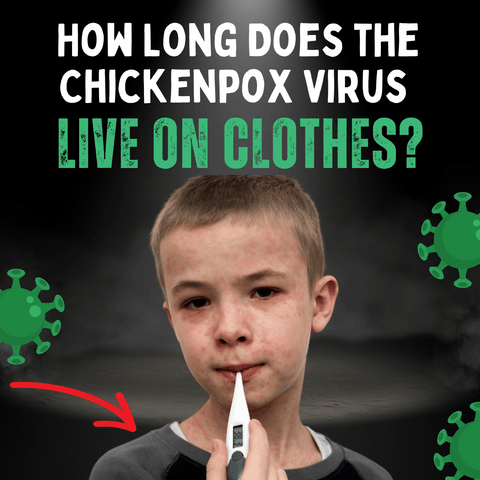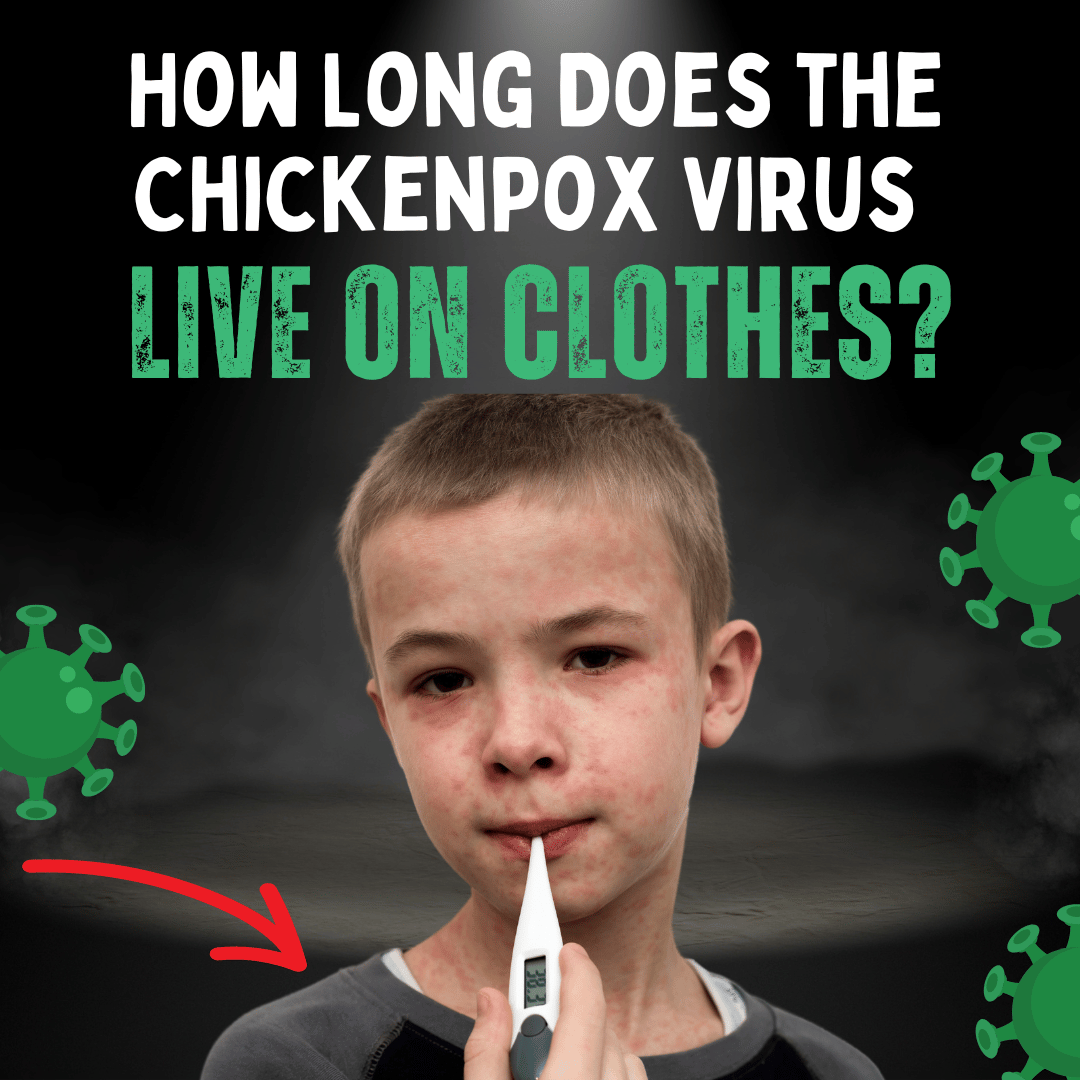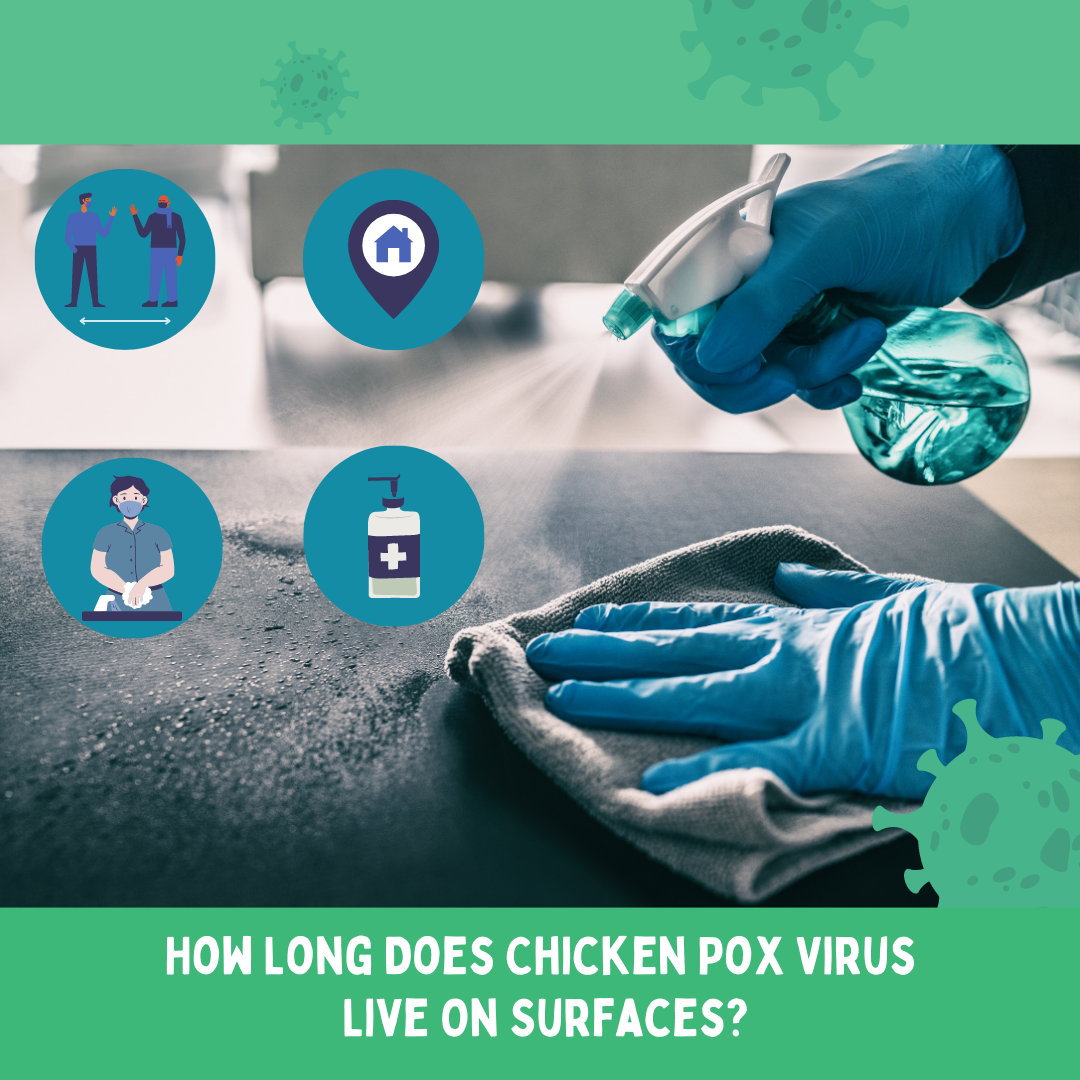Ever found yourself worried about how long the chickenpox virus might lurk on your clothes, especially when there's been a recent infection in the house? 
It's a valid concern - after all, chickenpox is highly contagious and can easily spread within close quarters.
Interestingly, the lifespan of the virus on fabrics is not as long as you might think.
In this article, we'll dive into this topic, shedding light on how the chickenpox virus interacts with our daily wearables.
By the end of it, you'll be equipped with useful knowledge that could help prevent the spread of this infectious disease within your household.
How Long Does Chickenpox Virus Live On Clothes?
The chickenpox virus, also known as varicella-zoster virus, has a short survival duration on clothes and other inanimate surfaces. Its lifespan on clothing is typically less than two hours, depending on various conditions like humidity and temperature. However, the virus can remain airborne for several hours, making indirect transmission possible. Despite its brief existence on fabrics, it's still advised to wash clothes worn by an infected individual to minimise the risk of spread.
What is Chickenpox?
Chickenpox, otherwise known as varicella, is a highly contagious disease. It's caused by the varicella-zoster virus and is characterised by the tell-tale rash of itchy, red spots that turn into fluid-filled blisters.
It’s a common illness among children, but adults can contract it too.
Symptoms and Transmission
Symptoms typically include a fever, loss of appetite, headaches, and the characteristic itchy rash.
Chickenpox spreads through direct contact with these blisters or through airborne droplets when an infected person coughs or sneezes.
It can also be contracted by touching contaminated items freshly soiled, such as clothing, from an infected person.
This brings us to our main point of discussion - how long can the chickenpox virus live on clothes?
Reactivation: Shingles
The chickenpox virus doesn't just disappear from the body once the illness has passed.
Instead, it lies dormant in the nerve tissues and can reactivate years later, causing a different disease known as shingles.
This condition presents as a painful rash and is more common in older adults or individuals with weakened immune systems.
Life Span of Chickenpox Virus on Surfaces
On Clothes
The chickenpox virus is not as robust as you might think. Outside of the human body, it doesn't survive long, especially on inanimate objects like clothing.
Research indicates that the virus can live for less than two hours on clothes.
Remember that this timeframe can vary depending on a few factors which we will discuss later.
Related: How Long Does Chicken Pox Virus Live On Surfaces?
In the Air
Unlike on surfaces, the chickenpox virus is more resilient in the air.
It can survive for several hours airborne, making it possible for an uninfected person to contract the virus simply by breathing in a space where an infected person has coughed or sneezed.
Factors Affecting the Virus's Survival
Wet or Dry Conditions
The condition of the infected clothing can influence the survival of the chickenpox virus.
Wet conditions might create a more conducive environment for the virus, prolonging its lifespan.
On the other hand, dry conditions may cause the virus to die out faster.
Temperature
The atmospheric temperature is another significant factor that impacts the survival of the chickenpox virus.
Warmer temperatures are generally less favourable for the virus, shortening its lifespan outside the human body.
Conversely, cooler temperatures could potentially extend the survival duration.
Preventive Measures Against Chickenpox Spread
Understanding how long the virus survives on clothes and other surfaces is part of the fight against chickenpox.
However, the most effective way to prevent its spread is through vaccination.
Besides that, regular hand washing, avoiding close contact with infected individuals, and disinfecting objects and surfaces can also help reduce the risk of chickenpox transmission.
Laundry Practices During a Chickenpox Infection
Laundry practices can significantly reduce the risk of spreading the chickenpox virus within the household.
Wash the clothes, bed linens, and bath towels of a person with chickenpox separately from the rest of the family's laundry.
Use hot water and detergent, and dry the laundry using high heat.
This practice kills the chickenpox virus and other germs, preventing further spread of the disease.
Varying levels of porosity in Clothing
Porosity refers to the measure of free space to fiber in a given volume of fabric.
Here are some examples of clothing materials that are more porous:
| Fabric | Description |
|---|---|
| Cotton | Cotton is a breathable and comfortable fabric known for its high porosity. |
| Linen | Linen is a lightweight and breathable fabric that is also highly porous. |
| Jersey | Jersey is a knitted fabric with high porosity, making it comfortable to wear. |
| Rayon | Rayon is a semi-synthetic fabric made from wood pulp. It is known for its softness, breathability, and high porosity. |
It's crucial to understand that clothing materials' level of porosity can differ based on the particular fabric and its construction, which could potentially impact the survival of the chickenpox virus on these materials.
The porosity, meaning the fabric's ability to allow air (and possibly, in this context, the virus) to pass through, can be gauged using various methods like air permeability, image processing, and geometry modelling.
Therefore, the type of clothing material might influence the longevity of the chickenpox virus on the fabric.
Conclusion
In essence, the chickenpox virus doesn't have a long life on clothing - typically surviving less than two hours depending on various conditions. However, it's airborne survival is much longer, enabling it to spread indirectly.
Various factors such as the wetness of the clothes and the environmental temperature can impact the virus's survival rate.
Thus, understanding these dynamics can contribute to effectively managing and preventing the spread of chickenpox.
While maintaining hygiene, proper laundry practices and vaccination remain our prime arsenal against this disease, knowing about its lifespan on clothes helps us take those extra precautionary steps for the health and safety of our families.
FAQs
How long does the chickenpox virus survive on the skin?
The chickenpox virus, once on the skin, can cause infection almost immediately. However, it doesn't "survive" on the skin in the same way it might on a surface. The virus enters the body, starts replicating, and causes symptoms within 10 to 21 days.
How long does it take for chickenpox to no longer be contagious?
A person with chickenpox is generally contagious 1-2 days before the rash appears until all the blisters have crusted over. This period usually lasts about 5 to 6 days.
Can the chickenpox virus survive on other fabrics apart from clothing?
While specific research on all types of fabrics is limited, it is generally believed that the chickenpox virus can survive on various fabrics for a short duration, similar to clothes. However, the virus is fragile and does not survive for long outside the human body.
Can you catch chickenpox from touching a person's clothes who had chickenpox a week ago?
Given the nature of the chickenpox virus, it is highly improbable. The virus can be spread through airborne droplets from coughing or sneezing, or by touching items freshly contaminated, such as clothing. However, the virus doesn't survive long outside the human body, especially after a week. While it's always wise to wash clothes worn by an infected person, the risk of catching chickenpox from them after a week is minimal.






Share:
Can You Carry Chicken Pox If You Have Had It?